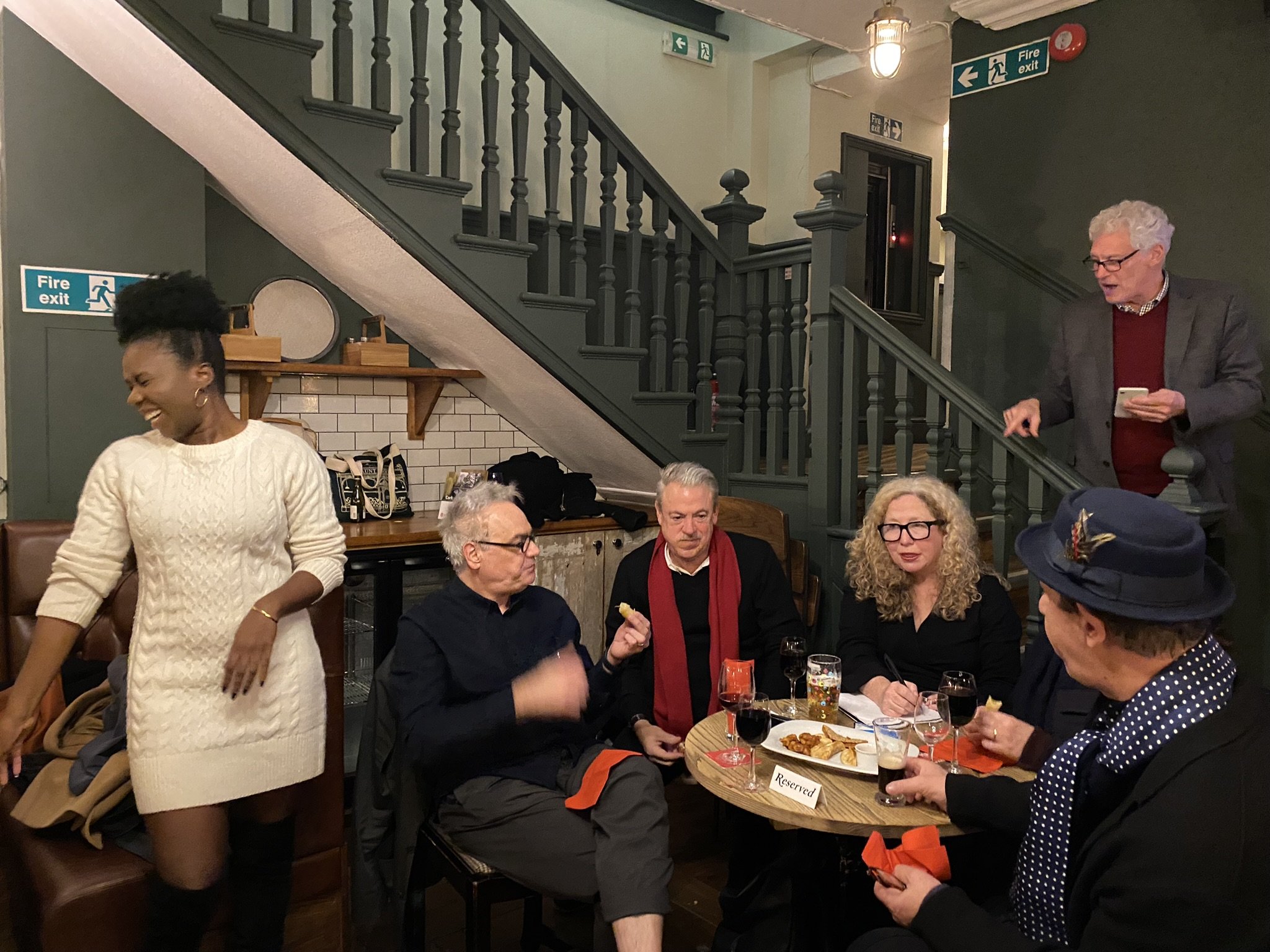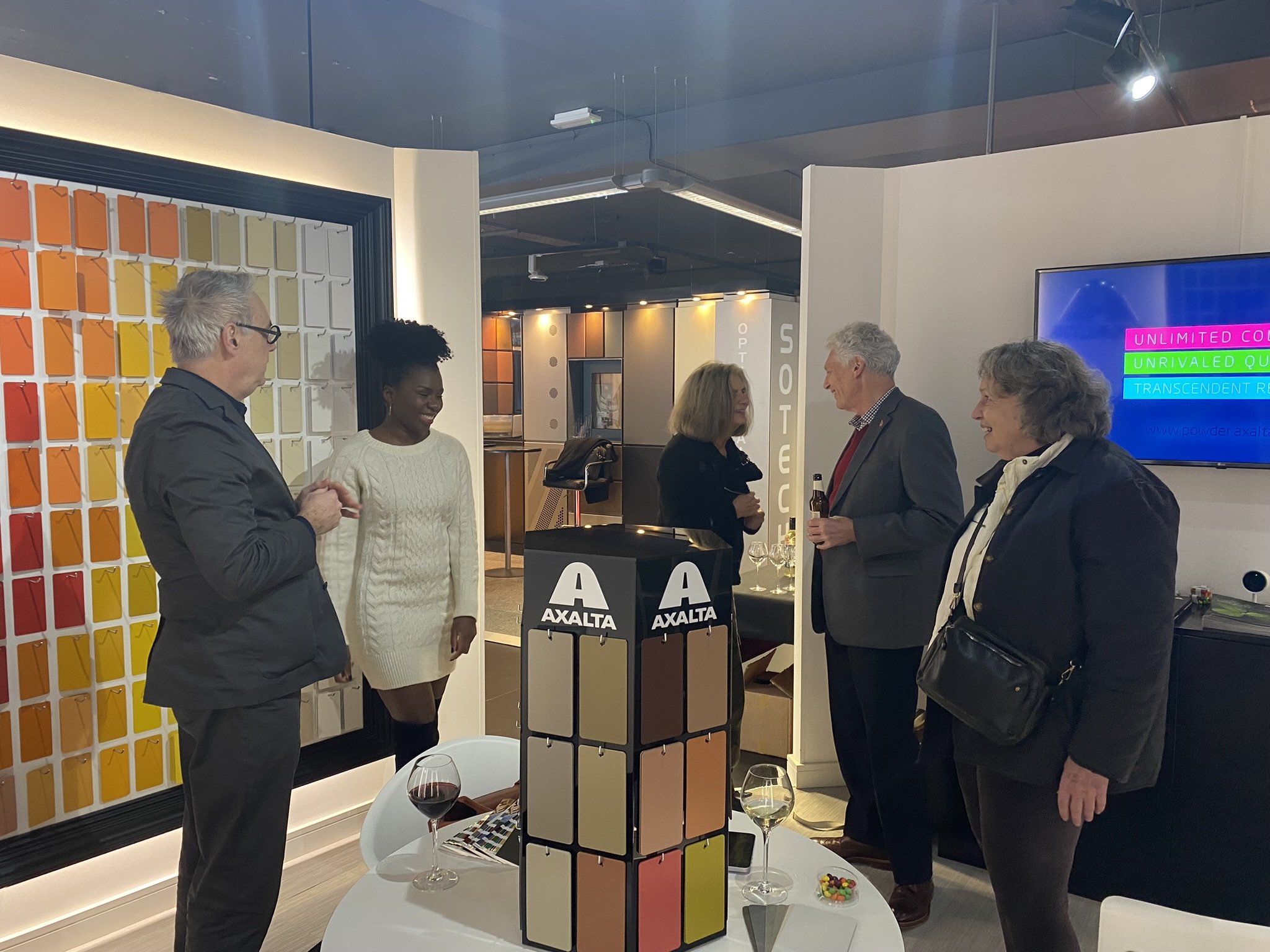2024 Pub Quiz At The College Arms
Fiona Mckay
Photo by Adelina Koleva, AIA.
On Wednesday, November 13, 2024, members of the AIA UK community and friends gathered at the College Arms in London for a relaxed evening of architectural trivia and general knowledge over drinks. The event, free to attend and open to everyone, was a great opportunity to bring people together, whether in pre-formed teams or solo participants looking to join forces on the night.
The evening began at the Axalta London Colour Experience Room, where attendees enjoyed a warm welcome by AIA UK sponsor representative Dami Babalola who generously provided drinks (matcha lattes!) and snacks (cleverly chosen Skittles – so visitors could “taste the rainbow”). Axalta’s vibrant showroom, showcasing an astonishing 700 powder coating colours, provided a visually engaging start to the event. The range of powder-coating options – some developed for appearance, others for durability – offered plenty of inspiration for anyone with a passion for colour.
By 6:45, the group had migrated across the street to the College Arms, where the pub quiz got underway in a private area downstairs. The event was championed by Bea Sennewald, longtime organiser of the AIA UK pub quiz, with assistance by Adelina Koleva, who helped in preparing and scoring questions. Michael Lischer also played a valuable impromptu role as master of ceremonies.
There was a total of five teams of various sizes, the smallest of which comprised only of two (exceptionally knowledgeable, and very determined!) board members. Questions were a mix of architectural trivia and broader general knowledge which kept everyone entertained and challenged in equal measure. Axalta ensured participants stayed on their toes by contributing a special round of questions focusing on colour, which made for a great learning experience to round of the earlier visit to the showroom.
After a spirited contest, the team made up of a medley of solo participants - students and young professionals – emerged victorious, reeling in the top prize of a bottle of champagne (and some well-earned bragging rights). Congratulations! Importantly, the evening provided a chance for architects, designers, sponsors, and enthusiasts to connect, relax, and enjoy each others company in an informal setting.
Thank you to everyone who joined, and a special thanks to Axalta for their generous sponsorship and for hosting the pre-quiz drinks. We hope to see even more of you at our next event!
Written by Adelina Koleva, AIA





















